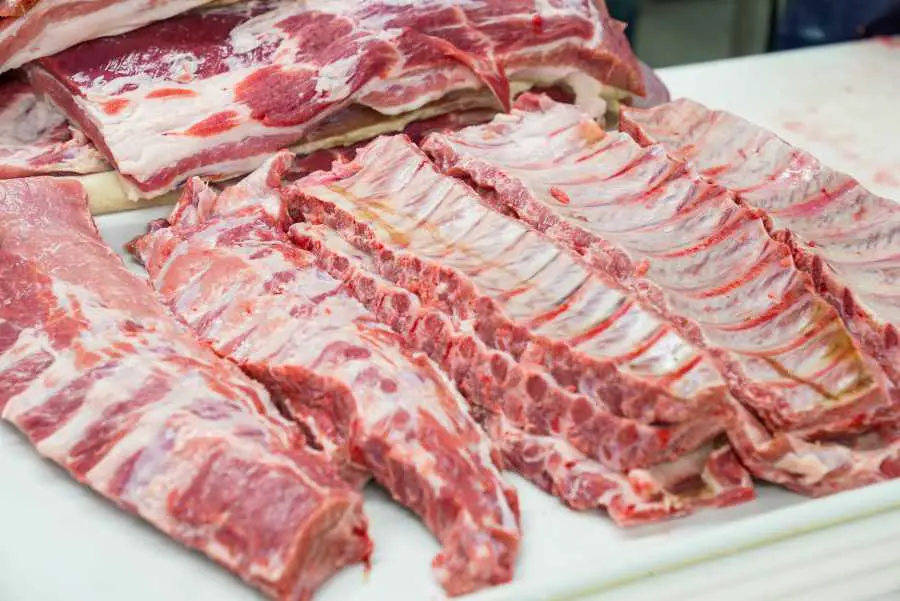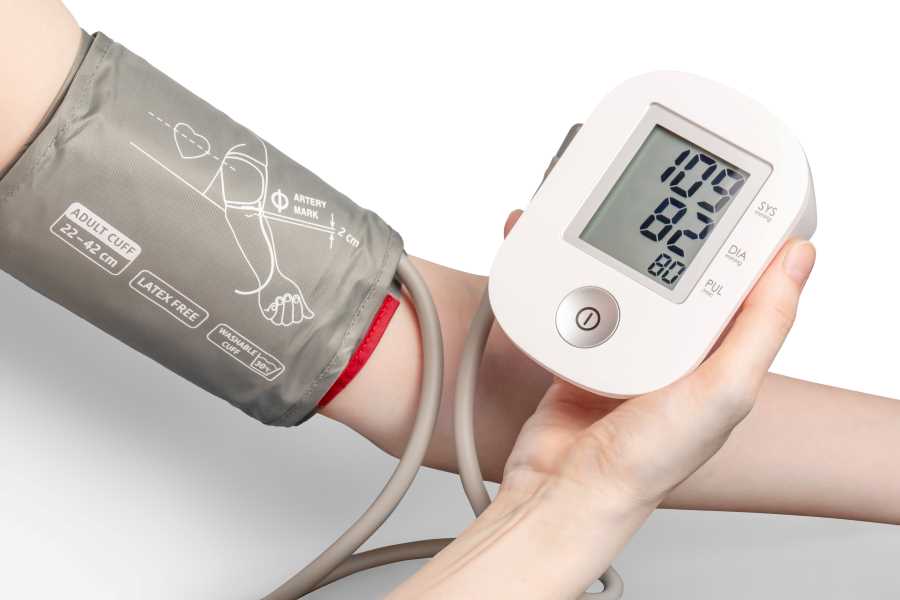The Paleolithic Ketogenic Diet has been used by the International Center for Medical Nutritional Intervention (ICMNI), formerly known as Paleomedicina, based in Budapest, Hungary, to treat many chronic diseases since 2012.
In essence, the Paleolithic Ketogenic Diet is a strict carnivore diet that includes only quality meat, fat, and organ meat. However, if health conditions permit, fruits and vegetables can be allowed in limited quantities.
This post looks at how the diet was created, the general rules of this diet and some publicly reported cases where patients with chronic conditions have been successfully treated with this diet.
How the Paleolithic Ketogenic Diet was created
The Paleolithic Ketogenic Diet (PKD) is primarily the brainchild of Dr. Zsófia Clemens, brain researcher and biologist, and Dr. Csaba Tóth, physician and researcher.
It is based on two diets: the ketogenic diet and the paleolithic diet.
The ketogenic diet
The ketogenic diet is a diet that is high in fat, moderate in proteins, and low in carbohydrates.
Calories on this diet are divided into approximately 55-60% from fat, 30-35% protein, and 5-10% carbohydrates. With this macronutrient ratio, the body will rely on fat for fuel rather than sugar.
The ketogenic diet was used to treat epilepsy in the 1920s and 1930s. However, it gradually lost its popularity after the first drug for epilepsy was released.
The diet made a comeback in the 1990s when Jim Abrahams, an American movie director and writer, set up the Charlie Foundation for Ketogenic Therapies after his son’s seizure was successfully controlled with the ketogenic diet within a month.
In addition to epilepsy, the ketogenic diet has been found to be beneficial with other medical conditions such as diabetes, obesity, brain trauma, neurological disease, Alzheimer’s disease, Parkinson’s disease, etc.
A drawback of the ketogenic diet is it only emphasizes the macronutrient ratio and the importance of limiting carbs to maintain ketosis. It does not exclude foods that are high in anti-nutrients that could be contributing or causing a chronic health problem in the first place, e.g. intestinal permeability.
Currently, the ketogenic diet is an extremely popular diet due to its ability to help people lose weight.
The paleo diet
The paleo diet, on the other hand, emerged relatively recently. It was pioneered by Dr. Loren Cordain, professor of health and exercise science at Colorado State University.
The idea behind this diet is that because our genetics remain the same as that at the end of the Paleolithic period, the human body is more suited to the diet of this period.
The paleo diet tries to mimic the diet of hunter-gatherer groups. It includes food that existed before the agricultural revolution such as fruits, leafy vegetables, tubers, fish, grass-fed meat, pasture-raised poultry and eggs, nuts, and some healthful oils. It excludes all grains, dairy, and all processed foods.
However, although it’s a great idea to imitate the way our ancestors used to eat, the diet of modern-day hunter-gatherer societies is found to be not representative of our ancestors’ diet throughout most of human evolutionary history.
In a recently published study, Ben-Dor et al (2021) find that the totality of evidence from human physiology and genetics, archeology, paleontology, and zoology points to the fact that humans were definitely not generalist omnivores as previously widely believed. Instead, they were hyper-carnivorous apex predators that ate mostly meat from large animals for 2 million years. Their diet was definitely not that of typical hunter-gatherer societies.
The Paleolithic Ketogenic Diet
Previously the ICMNI had been using the paleolithic diet to treat their patients, however, this diet was proven to be ineffective in the vast majority of chronic conditions.
While the paleo diet is good for treating high blood sugar levels and high blood pressure, it is not effective for autoimmune diseases.
They then developed the Paleolithic Ketogenic Diet in 2010-2011 based on clinical evidence from around 4,000 patients which they found to be a lot more effective in treating many chronic diseases including diabetes, autoimmune diseases, cancer and intestinal permeability.
In essence, the Paleolithic Ketogenic Diet is a high-fat animal-based diet that includes meat, fat and organ meat. It excludes many popular paleo foods such as coconut oil, avocado, nuts, seeds and even healthy vegetable oils.
The Paleolithic Ketogenic diet is nutrient-dense because it emphasizes organ meat while ensuring patients stay in deep ketosis with a very high percentage of fat intake.
In their view, the Paleolithic Ketogenic Diet is the “ultimate healthy diet” because it meets all of our biological needs.
Their view is ‘one species, one diet’ and there is no such a thing as ‘metabolic type’ and there is no need to personalize the diet.
The idea of the Paleolithic Ketogenic Diet is not new, however. The concept of a healthy high-fat animal-based diet with plenty of organ meat has been previously studied, for example, McClellan and Du Bois (1930), Stefansson (1954), Voegtlin (1975), and Newbold (1991).
Paleolithic Ketogenic Diet Rules
Below are the main rules of the Paleolithic Ketogenic Diet as published on their website and outlined in various interviews given by Dr. Zsófia Clemens and Dr. Csaba Tóth.
1. Macro nutrient ratio
As mentioned above, the aim of the diet is to get maximum nutrition with minimum toxin load while staying in deep ketosis and burning fat for fuel.
The recommended fat to protein ratio on this diet is about 2:1 in grams. This translates to 82% of calories from fat and 18% of calories from protein.
Dr. Zsofia Clemens also mentioned in one of her interviews that they recommend adding 35 grams of animal fat to every 100 grams of average meat cut that you get from the grocery store.
This is to ensure you get sufficient fat. Because saturated fats have been demonized for so long, most people fear animal fats and, as a result, visible fats are usually trimmed off and the meat that you get from the grocery store these days are generally quite lean.
2. Type of animal-based food
Animal-based foods include red and fatty meat, fat and offal (e.g. brain, liver, kidney, and marrow) from four-legged animals.
The best food is red meat, animal fat and offal from grazing animals, i.e. ruminants. If you eat pork, it should be pasture-raised pork.
Offal intake is emphasized on this diet to maintain a healthy level of vitamins and minerals. You are encouraged to eat offal on a regular basis (my interpretation of regular is from 3 to 5 times a week).
No nitrates, nitrites, or other additives in meat products (please check out this article written by Dr. Csaba Tóth arguing why you should avoid nitrates and nitrites consumption).
No artificial sweeteners but honey is allowed in moderation.
Eggs are initially excluded in those with highly elevated intestinal permeability and/or vaccines during the preceding 6 months.
All animal-based foods should preferably be sourced from pasture-raised animals.
Aim for fresh meat and avoid processed meat which can contain additives.
All dairy products, grains, plant oils, nightshades, legumes, nuts, refined sugars, food additives, artificial sweeteners including stevia and natural sweeteners are excluded.
In short, only eat meat, animal fat and organ from four-legged animals and nothing else.
Other animal-sourced food like eggs, fish, seafood and poultry may be allowed in certain cases, depending on your medical history and your goals. If you are allowed to eat those, they should be organic, wild-caught or pasture-raised.
3. Fruits and vegetables
The ICMNI’s view is that eating fruits and vegetables does not form part of our physiological needs but is associated with risks. Plant foods can only be regarded as ”relatively” safe and only when certain plant food items are consumed and only in limited amounts.
However, the Paleolithic Ketogenic Diet allows for up to 30% plant food (in volume).
According to Dr. Zsofia Clemens, this does not mean they are recommending plant food at all for any reason. This is just an allowance for those people with not so severe conditions who can physiologically tolerate plant food.
If they have a patient with metastatic cancer, a patient who underwent several cycles of chemotherapy, or a patient with an autoimmune condition, then there is no question that he or she will need to be on a full animal-based high-fat diet with just meat, fat, and organ meat (see reported clinical cases below).
Though they would love to please their patients and allow some flexibility, that would not be in the best interest of the patients.
For some patients, there is no choice but to strictly adhere to an animal-based diet.
If they have a patient with hypothyroidism without complications or just a simple overweight patient, a simple type-2 diabetes patient, then he or she may be doing well with a diet that allows for some vegetables and fruits.
If plant food is allowed, only fruits and “paleolithic” vegetables from organic sources should be consumed.
They should be local and seasonal.
They should be low-carb to maintain ketosis status.
4. Drinks
Drink only water and only drink as needed.
Black and herbal tea should be avoided.
Coffee is allowed only after full regeneration and in moderation.
5. Supplement
They do not recommend taking any supplements.
In fact, in their protocol, one of the first general therapeutic steps is to discontinue all dietary supplements.
Only in some rare cases, a one-off vitamin D supplement may be given (200,000 IU during 4 days).
6. Salt
In the protocol published on the ICMNI website, they do not mention salt intake specifically.
However, in an article published on their website, Dr. Csaba Tóth is of the view that humans have the ability to self-regulate salt consumption and there is no need to define the recommended daily salt intake.
It is senseless to set limits on the quantity of salt intake … you may use as much salt as you wish, as it will have no harmful effects. It will not cause hypertension.
People whose diet contains added carbohydrates, chiefly glucose and fructose, would want to eat more salt. However, the same foods would taste too salty for a person on lowcarb or zerocarb diet.
Nonetheless, once you vote on salt, try to use original rock salt that contains no anti-caking agents or any other additives.
Dr. Csaba Tóth
7. How often and how much
On the Paleolithic Ketogenic Diet, you are encouraged to eat when you are hungry. However, the general need for food will decrease on this diet. The same applies to water intake, you will need less water on the Paleolithic Ketogenic Diet than when you are on a high-carb diet.
In one of the interviews, Dr. Csaba Tóth said that it is recommended to eat twice a day on this diet.
8. Side effects
With the longest follow-up period of 7 years, their patients have never experienced side effects or nutrient deficiencies under the Paleolithic Ketogenic Diet.
They consider the diet to be safe for adults, seniors, pregnant and lactating mothers, growing children and even weaning infants.
9. Efficacy
Strict adherence to the Paleolithic Ketogenic Diet can help reverse chronic conditions such as autoimmune diseases, diabetes and intestinal permeability.
No other medical intervention or diet has been able to normalize pathological intestinal permeability but the Paleolithic Ketogenic Diet can.
Cancer patients adhering to the diet can also stop tumor growth and prevent the formation of metastases and decrease in tumor size in some cases.
While the Paleolithic Ketogenic Diet goes against the advice of most healthy authorities and medical professionals, it is backed by clinical success.
Please see published clinical cases in the next section.
The main reasons why this simple diet works in treating so many chronic health conditions are:
- It is nutrient-dense
- It suits everyone: all humans have the ability to digest meat and metabolize fat for fuel
- It cuts out all inflammatory foods (e.g. grains, vegetable oil, processed sugar)
- It eliminates all additives and chemicals in food.
When your body is relieved of the influx of dietary toxins and provided with the necessary nutrients, it has the opportunity to heal itself from inside out, including stopping cancer cells grow.
While the diet appears simple and easy to follow, if you have a chronic condition and are taking medications, please consult with a doctor who is knowledgeable in this area or contact the ICMNI for advice to get appropriate medical supervision.
As mentioned above, based on their clinical experience, the ICMNI considers the diet to be safe for everyone. However, you do need medical supervision, especially when you gradually come off medications.
10. How to start the PKD
Similar to the carnivore diet, you can start the PKD diet by making a gradual change to your current diet or switching to the PKD immediately.
If you start the diet gradually, your body will be given the time to adapt to the high intake of fat and protein over time. Transitional symptoms like headache and diarrhea will be likely less severe.
If you adopt the PKD immediately, you may experience severe side effects for the first few days to a couple of weeks, but are likely to experience improvements sooner.
Which way you should follow will depend on your health conditions. If you have advanced-stage brain cancer like one of the ICMNI’s patients (see case reports below), you obviously have no time to lose and should be on the most strict version of the PKD immediately.
If you have a less urgent health problem to resolve, you can take the gradual approach, but progress is expected to be slower.
11. Who should not be on the PKD
The Paleolithic Ketogenic Diet is safe for everyone except for people who for whatever reason can’t metabolize animal fats and protein well.
In addition, the ICMNI considers the diet to be not suitable for people who have had an organ transplant and are on immunosuppression drugs.
This is because the PKD has the effect of strengthening one’s immune system. People who have had organ transplants need to be on immunosuppressants to prevent their immune system from rejecting a transplanted organ. These two forces would work against each other and are, therefore, considered not compatible.
However, the ICMNI has had patients with transplanted organs who had benefited from the diet.
List of reported case studies
Below is a summary of some success cases that have been published by researchers at the ICMNI.
1. Childhood absence epilepsy (2013)[1]
A 7-year-old child was presented with absence epilepsy (involving brief and sudden lapse of consciousness due to an abnormal electrical impulse in the brain) with about 50 absence seizures a day at the time of her formal diagnosis.
She was prescribed epilepsy medication but her parents were concerned about the side effects and contacted Dr. Csaba Tóth to pursue dietary therapy instead.
She was put on the Paleolithic Ketogenic Diet consisting of meat, animal fat, organ, fish and egg without calorie restriction.
Sample daily menu includes:
- Breakfast: scrambled eggs fried in lard
- Snack: pork greaves
- Lunch: chuck roast
- Snack: smoked sausage
- Dinner: beef steak.
The recommended macronutrient ratio was 4:1 fat to protein (in gram). Note that this is double the general recommended ratio of this diet mentioned above.
She was also given vitamin D3 (2,000 IU/day) and omega 3 fatty acids (500 mg/day).
She completely adhered to the diet and experienced a gradual reduction in the number of seizures from the first week on the diet.
She became seizure-free after just 6 weeks on the diet.
After 3 months, she was advised to include some low glycemic index vegetables (e.g. cucumber, cauliflower).
She also experienced other developmental and behavioral improvements. She had gained 3 kg and grown 6 cm after being on the diet for only 4 months (whereas her weight and height did not change during the previous 2 years).
She was previously described as a child with special needs in education but was attending regular school and performing well at the time of reporting.
2. Type 1 diabetes mellitus (2014)[2]
A 9-year-old child had a three-month history of polyuria, polydipsia, polyphagia, fatigue, and weight loss. His abdomen was bloated. He had frequent upper respiratory tract infections, epistaxis, and eczema on his hands as well as asthma. He was diagnosed with type 1 diabetes and initially was on an insulin regime with a high carbohydrate diet.
He was advised to follow the paleolithic ketogenic diet consisting of only animal meat, fat, offal, and eggs with a fat-to-protein ratio of about 2:1.
Following this advice, the child consumed meat, fat, and offal only from cattle and pork. He did not consume vegetables and fruits at all. Artificial sweeteners and vegetable oils were excluded. He was allowed to consume small amounts of honey. The diet was introduced gradually within five days.
Following this dietary change, glucose levels normalized and he was able to discontinue insulin.
No hypoglycemic episodes occurred on the diet and several other benefits were achieved including improved physical fitness, reduction of upper respiratory tract infections and eczema. At the time of reporting, he had been on the diet for 19 months.
3. Type 1 diabetes mellitus (2014)[3]
A 19-year-old male with newly diagnosed T1DM was first put on an insulin regime. Twenty days later, he shifted towards the paleolithic ketogenic diet and was able to discontinue insulin.
Strict adherence to the diet resulted in normal glucose levels and a more than three-fold elevation of C-peptide level indicating restored insulin production.
At the time of reporting, the patient had been on the paleolithic ketogenic diet for 6.5 months. He was reportedly free of complaints, and no side effects emerged.
4. Lung cancer (2014)[4]
A 58-year-old patient presented with shortness of breath, coughing, chest pain and fatigue with a complex medical history including removal of a lobe of the lung due to bronchioalveolar carcinoma, hysterectomy due to myoma and cholecystectomy due to gallstones.
The patient was diagnosed with non-small cell lung cancer adenocarcinoma which was identified as T1, N0, M0 (meaning cancer has not spread to nearby lymph nodes or to distant body parts).
The patient was not eligible for surgery. She then contacted Dr. Csaba Tóth and Dr. Zsófia Clemens and was put on the Paleolithic Ketogenic Diet.
Her diet consisted of meat, offal, fat and eggs with a fat-to-protein ratio of at least 2:1 and excluded all plant food.
She was allowed one cup of coffee a day and small amounts of honey for sweetening.
She also took 10,000 IU of vitamin D3 supplement a day.
Along with the diet, she received four cycles of chemotherapy but due to the side effects, she discontinued after the fourth cycle.
Before the commencement of the diet, she was on seven medications including valsartan, hydrochlorothiazide, allopurinol, nebivolol, aceclofenac, furosemide and potassium chloride. In addition, she also took a combination of budesonide and formoterol as an inhalation aerosol.
She was advised to discontinue all medications, except for nebivolol which was discontinued gradually within two weeks.
Imaging data showed a slow regression of the tumor over time.
At the time of reporting, the patient had been on the diet for 10 months and was free of lung disease symptoms. She also lost 20 kg (44 pounds) and her BMI decreased from 30.5 to 22.6 during this period.
5. Crohn’s disease (2015)[5]
A 14-year-old boy presented with fatigue, low-grade fever, iron deficiency anemia, lower abdominal tenderness and perianal dermatitis. He was diagnosed with Crohn’s disease (a type of inflammatory bowel disease).
The Paleolithic Ketogenic Diet was recommended and the diet consisted of animal fat, meat, offal and eggs with an approximate 2:1 fat to protein ratio. Red and fat meats instead of poultry as well as regular intake of organ meats from pork and cattle were encouraged.
This resulted in resolution of symptoms, normalized laboratory parameters as well as gradual normalization of bowel inflammation.
The patient was able to discontinue medication within two weeks.
At the time of reporting, he had been on the diet for 15 months and was free of symptoms as well as side effects.
6. Gilbert’s Syndrome (2015)[6]
A 30-year-old female patient was diagnosed with Gilbert’s syndrome, a hereditary condition where the liver is unable to process bilirubin (the yellowish-brown pigment in bile).
The patient had also suffered from migraines for 10 years with an average frequency of 3 episodes per month. Her other symptoms included fatigue, constipation, and granulomatous dermatitis on both legs.
The patient decided to follow the paleolithic diet where she excluded dairy, cereals, legumes, maize, rice, refined carbohydrates. She ate vegetables, fruits, meat, eggs but also had coconut oil, oilseeds, sugar alcohol and coconut.
She followed the paleo diet for 20 months and experienced some improvements including lower bilirubin, the disappearance of the yellowish color in the eyes, a reduction in migraine frequency (down to 4 to 6 episodes per year). However, she still felt fatigued and her granulomatous dermatitis remained. She also lost 5 kg (11 pounds) on this diet and her BMI was only 16.1.
She was advised to switch to the Paleolithic Ketogenic Diet which included meat, animal fat, eggs, offal and vegetables and fruits (less than 30%). Fat to protein ratio was at least 2:1 (in gram).
She avoided additives, artificial sweeteners, coconut oil, oilseeds, oilseed flours, and cocoa, but she consumed a small amount of honey.
On the Paleolithic Ketogenic Diet, her fatigue disappeared, her migraine episodes reduced to about twice a year, her dermatitis also resolved and she reported improvements in mental and physical health and gained 4 kg (9 pounds) in weight.
7. Soft palate cancer (2016)[7]
A 60-year-old patient was diagnosed with soft plate cancer. The tumor was a grade 2 measuring 36x33x27 mm arising from the left soft palate.
The patient was offered surgery and palatal lift prosthesis but she declined. She also did not receive chemotherapy or radiotherapy.
The patient met with Dr. Zsófia Clemens and Dr. Csaba Tóth shortly after diagnosis and was recommended the Paleolithic Ketogenic Diet which she immediately adopted.
The patient followed the most strict form of the diet which included only meat, animal fat and organ and no plant food for 6 months.
After that, she was allowed to eat a small amount of vegetables with a frequency of two times or less per week and to drink coffee in moderation.
The diet has resulted in a halted progression of the tumor. At the time of reporting the case, the patient had been on the diet for 20 months without side effects and symptoms.
There is substantial literature supporting the use of a ketogenic diet as an option to treat cancer which I will cover in a separate post in the future.
This began with Otto Warburg who postulated that cancer is a metabolic disease and that the main difference between cancer cells and healthy cells is that cancer cells, due to their defective mitochondria, depend entirely on glucose for energy while healthy cells can use both glucose and ketones for energy.
More recently, Dr. Thomas Seyfried, Ph.D. extends further the work of Otto Warburg and proposed that cancer cells can also rely on glutamine as another source of fermentable fuels to survive and proliferate.
The success of the Paleolithic Ketogenic Diet in treating cancer provides evidence supporting the above theory. Because the diet eliminates sugar and restricts protein, it starves cancer cells by restricting the two energy sources that they rely on to survive and grow.
8. Brain cancer (2020)[8]
A 52-year-old patient with a previous history of bladder cancer presented with a severe headache. Further examination revealed he had glioblastoma multiforme (the most aggressive type of cancer that begins within the brain).
Surgery was immediately performed and the patient underwent radio-chemotherapy together with temozolomide treatment for three months.
When an MRI done seven months later showed tumor recurrence, the patient decided to stop the standard radiation and chemotherapy and contacted the ICMNI for advice.
The patient was quickly put on the Paleolithic Ketogenic Diet as described above and was advised to eat only red and fatty meats with regular consumption of organ meat from cattle and pork. No plant food was allowed.
The patient was advised to “eat when hungry, drink when thirsty, and to eat until satiation”.
With the adoption of the Paleolithic Ketogenic Diet, the patient had been ‘progression-free, symptom-free and medicine-free for 38 months‘.
At the time of reporting, the patient had remained in remission for 48 months.
Conclusion
Our food can be the cheapest and most effective medicine to cure even the “incurable” diseases and we are grateful to the ICMNI and its team of researchers and doctors for their contribution.
They can’t patent their protocol the way pharmaceutical companies patent their drugs and can’t make much money out of it. But they have been actively researching, publishing case studies, giving interviews, and providing a lot of information on the diet for free.
If you know anyone who might benefit from this diet, please refer them to the ICMNI, they take in-patients as well as offer online consultations.
References
The International Center for Medical Nutritional Intervention website
Therapeutic protocol of Paleomedicina Hungary
Dr. Zsofia Clemens’ interview with Gary from Biohackers Lab
Dr. Zsofia Clemens’ interview with Dr. Eric Berg
Is the paleo keto diet a groundbreaking diabetes treatment?
If you find this post helpful, please consider sharing this post and my site with your family, friends, and followers. That would be much appreciated. Please also check out my library of articles on the carnivore diet here which is updated regularly.
Disclaimer: The information in this post is for reference purposes only and not intended to constitute or replace professional medical advice. Please consult a qualified medical professional before making any changes to your diet or lifestyle.
Photo credit: Mark Stebnicki on Pexels





